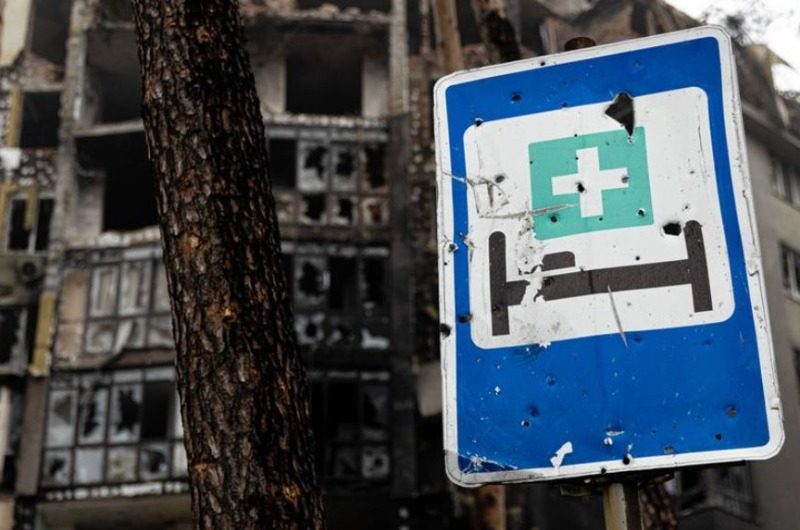
UNHCR: More than half a million Ukrainian refugees have returned home, despite war

While more than 4.3 million Ukrainians have fled their country since the start of the Russian offensive, some are now opting for the opposite path and choosing to return after a few weeks spent outside Ukraine.
“According to information provided by the United Nations Refugee Agency (UNHCR) and received from the State Border Guard Service of Ukraine, more than 537,000 people have crossed the Ukrainian border since February 24,” said announced the United Nations Office for the Coordination of Humanitarian Affairs.
This is a “significant figure” which suggests that return migration to Ukraine is likely to be on the rise, OCHA said in its latest situation report.
This timid return movement could, however, “create new challenges for the humanitarian response”, as people will need help to reintegrate into their communities or find suitable host communities if returning home is no longer a viable option. , reports the Office.
Number of refugees in Poland crosses 2.5 million mark
More than 7.1 million civilians are also displaced inside Ukraine, the UN Migration Agency (IOM) said this week.
A total of 11.4 million people have been forced to flee their homes either within the country or across international borders, including nearly 4.3 million refugees.
These are mainly women and children, who have fled across international borders – a 30% increase from the roughly 3.3 million people as of March 18.
In this batch of refugees, more than half, or 2.5 million people, have arrived in Poland since the start of the Russian offensive in Ukraine, including around 37,000 more over 24 hours, according to a count established Thursday by the High -Office of the United Nations Commissioner for Refugees (UNHCR).
In addition to the 2,514,504 refugees in Poland, nearly 662,000 have gone to Romania, more than 404,000 to Hungary and 401,000 to Moldova. More than 304,000 Ukrainian civilians have moved towards neighboring Slovakia. More than 350,000 are in Russia, but this data dates from ten days ago, and more than 18,000 are in Belarus, adds the UNHCR.
Protection needs continue to grow in eastern Ukraine
With all eyes on the eastern part of Ukraine, 16% of those trapped in their communities say they are unsure of leaving despite a backdrop of active hostilities. At the same time, 6% say they are staying so as not to leave family members behind. According to this study, nearly 3% say they would not know where to go.
Displaced and non-displaced people say their greatest needs are cash assistance, including access to cash (i.e. receiving cash, ATMs having no cash ), medicines and health services, and transportation.
On the ground, Eastern Ukraine continues to be “the epicenter of the ongoing military offensive, clashes in Donetsk, Kharkivska and Luhansk oblasts have intensified in recent days”.
According to OCHA, on April 4 and 5, several localities in the Luhansk region suffered heavy shelling, including Popasna, Rubizhne and Sievierodonetsk.
Situation in worst-affected areas of northern, southern and eastern Ukraine is increasingly ‘disastrous’ as active hostilities escalate in existing hotspots, says OCHA report and spread to new areas that had been spared by the ongoing military offensive. Under these conditions, protection needs and risks continue to grow.
More than 90 attacks on Ukrainian health establishments and workers
Meanwhile, access to affected communities to address growing needs and protection risks remains “largely limited”.
The problem is exacerbated by the fact that people trapped in areas where hostilities are active cannot be safely evacuated.
“This leaves many people’s needs unmet and drives others to attempt dangerous self-assessments to escape in search of safety and humanitarian assistance,” OCHA said.
Moreover, while health needs continue to increase, access to essential health services is increasingly restricted.
The number of verified incidents of attacks on healthcare facilities in Ukraine has risen to 91, leaving 73 dead and 46 injured, according to an April 6 tally by the World Health Organization (WHO).
Of the more than 90 attacks on healthcare since February 24, 77 have directly hit healthcare facilities. The WHO fears an increase in these attacks, especially since nearly 1,000 health establishments are located in areas of “active combat” or “with a significant presence of the forces of the Russian Federation”.
Almost half of pharmacies in Ukraine closed
In this context, with hostilities-related trauma and injuries on the rise, many hospitals have been reassigned to care for the wounded. This has resulted in disruptions to basic and routine health services, including sexual and reproductive health.
In addition, nearly half of the country’s pharmacies are reportedly closed, limiting access to essential drugs.
On another note, the WHO says many health workers are either displaced or unable to work, creating “serious gaps in health coverage” in Ukraine.
With regard to education, access remains severely limited, particularly in eastern Ukraine. According to OCHA, the increasingly intense clashes in this region will have “immediate repercussions” and longer term on access to education and educational outcomes for months or even years.
More broadly, the ongoing military offensive will considerably complicate an already difficult educational context in Ukraine.
“Even before the recent escalation, about 30% of educational institutions in eastern Ukraine reported not having enough teachers, a problem that Ukrainian authorities could not solve,” the report concluded. UN agency.
.
